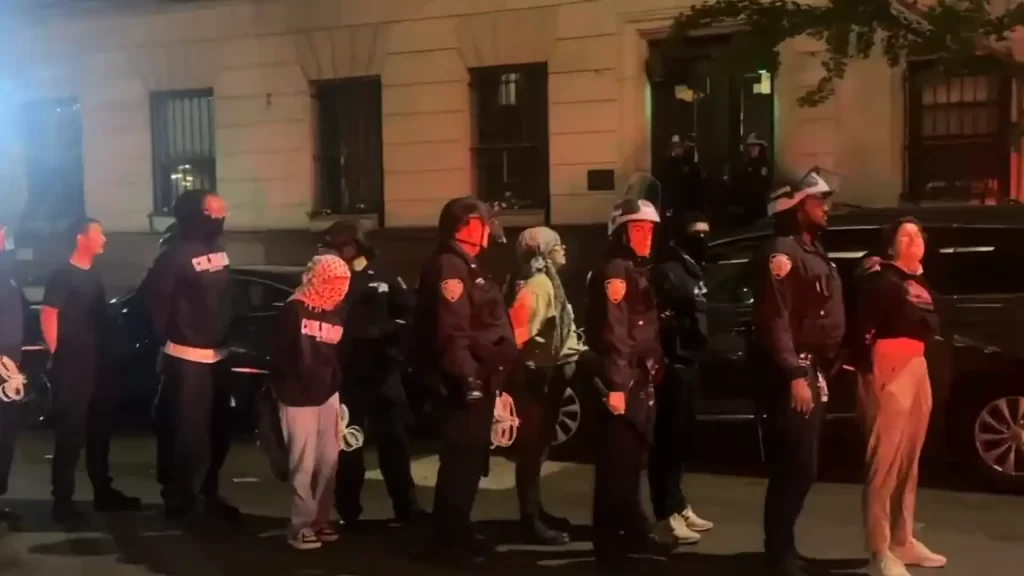The growing student movement at Columbia University has resulted in dramatic clashes between demonstrators and police in recent days. The protests, which started out as demonstrations against Israel’s actions in Gaza, have grown into a sensitive and complex issue that has caught the attention of national and local authorities, including the White House.
Timeline of Events:
- Protest Ignites (April 17): A group of students erect tents at Columbia University, protesting Israel’s actions in Gaza and urging the university to divest financially. This sparks the beginning of a series of demonstrations.
- University Response (April 18): President Minouche Shafik calls in the police to dismantle the encampment, resulting in the arrest of approximately 100 individuals. Tensions on campus increase when police enforcement is brought in.
- Escalation and Campus Closure (April 22): As tensions rise, Columbia University cancels in-person classes due to safety and security concerns.
- Administrative ultimatum (April 24): Administrators give protesters a deadline to leave the camp and warn them to take legal action if they don’t.
- Protesters’ Disobedience (April 29): A rising number of protestors are defying the university’s orders by refusing to leave the encampment despite warnings and suspensions.
- Campus Occupation (April 30): Tensions on campus increase as protesters take over Hamilton Hall.
- City Reaction and External Agitators (May 1): Eric Adams, the mayor of New York City, blames outside agitators for the chaos and criticizes the use of force. Approximately 300 arrests were made at Columbia University and the City University of New York.
Why was the NYPD involved?
The decision to call in the NYPD was impacted by growing unease and worries about school safety. The encampment of campus buildings and reports of altercations between demonstrators and police spurred the university administration to request support from law enforcement. The key goals were to restore order, safeguard faculty and students, and minimize any risks associated with extended protests.
The administration of President Joe Biden is keeping a close eye on the issue and reiterating the importance of student safety while stressing the value of nonviolent protest.
The events at Columbia University bring to light grave problems that many universities around the nation are currently facing. The protests brought attention to the challenges faced by student activists and raised issues with maintaining campus safety while upholding the right to free speech.
